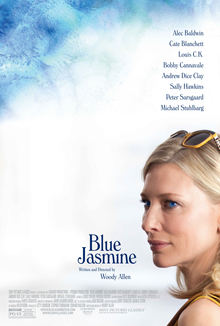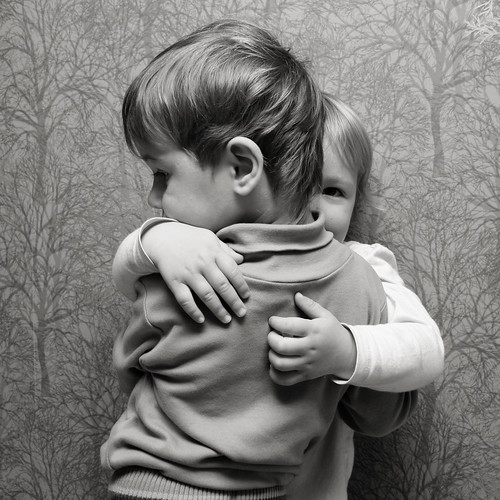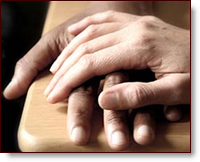I recently viewed a
TED video about the impact of divorce on children. Professor Tamara Afifi, a professor at the University of California Santa Barbara, presented the results of her research.
Here are some of her findings:
CONFLICT BETWEEN PARENTS, NOT DIVORCE, HARMS KIDS
Conflict between parents during marriage can be more harmful to children than a divorce. The differences between children of divorced parents and parents who are still married are not that great. What makes a difference is whether the conflict between parents continues, whether they are divorced or still married. Children are hurt most by parents in conflict.
DIFFERENCES IN DECADES
The impact on children of divorce in the 70’s, 80’s and 90’s has been different. In the 1970’s, there was a higher impact on children, which she attributes to the fact that divorces then were the result of bad marriages and more conflict. In the 1980’s, the impact was lower because people were divorcing for reasons having more to do with personal growth and self actualization.
There may have been less conflict and better communication. In the 1990’s, the impact has been higher which she suggests was due to the closer relationship children had with their parents, communicating daily, and more involved in each other’s lives. Children became more involved in the divorce because they were generally more involved in their parents’ lives.
NEED BOUNDARIES WITH YOUR CHILDREN
There is a danger with this closer, more involved relationship between parents and their children. Children should not be burdened with their parents’ hurt or anger at the other parent or put into the role of messenger. One child described her mother as her “best friend” who asked her daughter for advice about an affair. Kids shouldn’t have to deal with this.
A child shouldn’t be asked to “remind your mom” or asked “why doesn’t your dad tell me” about something. This puts them in the middle of the conflict or forces them to align with one parent. Establish boundaries about what is the adult conversation and what is the conversation with children about the divorce.
AVOID HURTING YOUR CHILDREN DURING DIVORCE
What can divorcing parents do to lessen the impact on their children? Work together on a co-parenting plan which redefines your roles following the divorce, work with a child specialist to establish the boundaries between adult and child issues in the divorce, improve your communication with each other, defuse emotions, and refuse to engage in bad mouthing the other parent.
In the collaborative divorce process, child specialists and coaches can help you in all of these areas.
 I recently saw the new Woody Allen film, Blue Jasmine. It stars Cate Blanchett and Alec Baldwin as a couple who live the high life and then the low life following divorce. The story line and themes in this movie seemed true to me based on my work with many divorcing couples, not just those who are wealthy.
There were the underlying issues in the marriage–the husband’s cheating, both with sexual affairs and financial fraud, and the wife’s complicity through passivity and claimed ignorance (although she knows more than appears). There was denial by both of the problems, which included mental health and drinking issues. For the wife in this movie, her loss of self and identity following the separation and divorce was shattering and, in the end, her emotional choice to revenge resulted in enormous cost and loss to both of them.
I am not saying that all divorces follow all of these themes in this movie. Like an opera, the movie highlights some dramatic truths about human nature and patterns in relationships.
One pattern is that problems during the marriage which have not been addressed can pop up and control the divorce process, sabotaging efforts to reach a settlement. This doesn’t mean that a couple has to “fix” all the troubles leading up to the divorce, but could require acknowledgement of the problems and work toward a future that addresses the realities of their situation. So, for the couple in Blue Jasmine, it would be addressing the mental health needs and possible alcoholism treatment for one or both, college education for wife, and a top notch criminal defense attorney for husband.
The instinct for revenge, which often causes hurt to both in the divorce, can be defused in a collaborative divorce process which focuses on the collective outcome for the family as a whole. In Blue Jasmine, that would include the outcome for their son, who was hurt by the divorce, and for the parents.
I recently saw the new Woody Allen film, Blue Jasmine. It stars Cate Blanchett and Alec Baldwin as a couple who live the high life and then the low life following divorce. The story line and themes in this movie seemed true to me based on my work with many divorcing couples, not just those who are wealthy.
There were the underlying issues in the marriage–the husband’s cheating, both with sexual affairs and financial fraud, and the wife’s complicity through passivity and claimed ignorance (although she knows more than appears). There was denial by both of the problems, which included mental health and drinking issues. For the wife in this movie, her loss of self and identity following the separation and divorce was shattering and, in the end, her emotional choice to revenge resulted in enormous cost and loss to both of them.
I am not saying that all divorces follow all of these themes in this movie. Like an opera, the movie highlights some dramatic truths about human nature and patterns in relationships.
One pattern is that problems during the marriage which have not been addressed can pop up and control the divorce process, sabotaging efforts to reach a settlement. This doesn’t mean that a couple has to “fix” all the troubles leading up to the divorce, but could require acknowledgement of the problems and work toward a future that addresses the realities of their situation. So, for the couple in Blue Jasmine, it would be addressing the mental health needs and possible alcoholism treatment for one or both, college education for wife, and a top notch criminal defense attorney for husband.
The instinct for revenge, which often causes hurt to both in the divorce, can be defused in a collaborative divorce process which focuses on the collective outcome for the family as a whole. In Blue Jasmine, that would include the outcome for their son, who was hurt by the divorce, and for the parents.  I recently saw the new Woody Allen film, Blue Jasmine. It stars Cate Blanchett and Alec Baldwin as a couple who live the high life and then the low life following divorce. The story line and themes in this movie seemed true to me based on my work with many divorcing couples, not just those who are wealthy.
There were the underlying issues in the marriage–the husband’s cheating, both with sexual affairs and financial fraud, and the wife’s complicity through passivity and claimed ignorance (although she knows more than appears). There was denial by both of the problems, which included mental health and drinking issues. For the wife in this movie, her loss of self and identity following the separation and divorce was shattering and, in the end, her emotional choice to revenge resulted in enormous cost and loss to both of them.
I am not saying that all divorces follow all of these themes in this movie. Like an opera, the movie highlights some dramatic truths about human nature and patterns in relationships.
One pattern is that problems during the marriage which have not been addressed can pop up and control the divorce process, sabotaging efforts to reach a settlement. This doesn’t mean that a couple has to “fix” all the troubles leading up to the divorce, but could require acknowledgement of the problems and work toward a future that addresses the realities of their situation. So, for the couple in Blue Jasmine, it would be addressing the mental health needs and possible alcoholism treatment for one or both, college education for wife, and a top notch criminal defense attorney for husband.
The instinct for revenge, which often causes hurt to both in the divorce, can be defused in a collaborative divorce process which focuses on the collective outcome for the family as a whole. In Blue Jasmine, that would include the outcome for their son, who was hurt by the divorce, and for the parents.
I recently saw the new Woody Allen film, Blue Jasmine. It stars Cate Blanchett and Alec Baldwin as a couple who live the high life and then the low life following divorce. The story line and themes in this movie seemed true to me based on my work with many divorcing couples, not just those who are wealthy.
There were the underlying issues in the marriage–the husband’s cheating, both with sexual affairs and financial fraud, and the wife’s complicity through passivity and claimed ignorance (although she knows more than appears). There was denial by both of the problems, which included mental health and drinking issues. For the wife in this movie, her loss of self and identity following the separation and divorce was shattering and, in the end, her emotional choice to revenge resulted in enormous cost and loss to both of them.
I am not saying that all divorces follow all of these themes in this movie. Like an opera, the movie highlights some dramatic truths about human nature and patterns in relationships.
One pattern is that problems during the marriage which have not been addressed can pop up and control the divorce process, sabotaging efforts to reach a settlement. This doesn’t mean that a couple has to “fix” all the troubles leading up to the divorce, but could require acknowledgement of the problems and work toward a future that addresses the realities of their situation. So, for the couple in Blue Jasmine, it would be addressing the mental health needs and possible alcoholism treatment for one or both, college education for wife, and a top notch criminal defense attorney for husband.
The instinct for revenge, which often causes hurt to both in the divorce, can be defused in a collaborative divorce process which focuses on the collective outcome for the family as a whole. In Blue Jasmine, that would include the outcome for their son, who was hurt by the divorce, and for the parents. 




